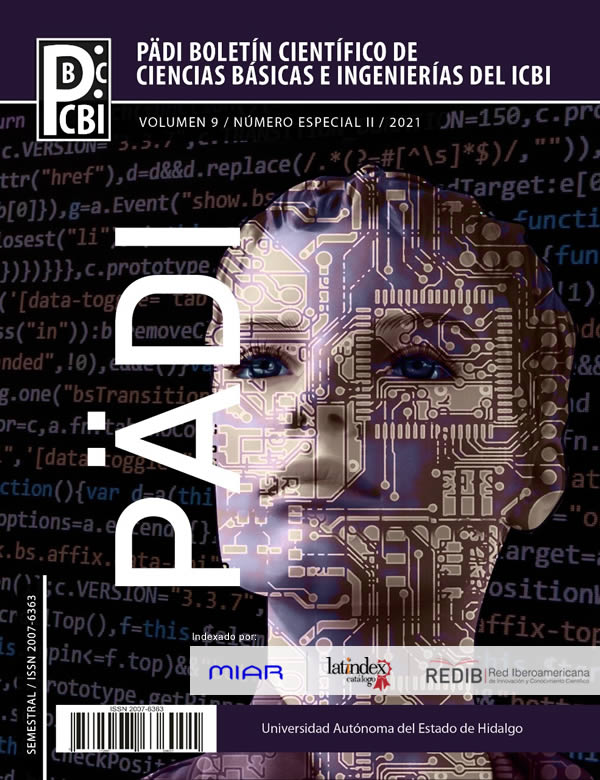Obtaining chitosan hydrogels/Rosmarinus officinalis modified with plasma
Abstract
Hydrogels are three-dimensional networks with high water content, hydrogels have different properties according to the material with which they are obtained. This materials based on natural polymers have good biocompatibility and biodegradability properties, among others. However, these properties can be improved using plasma technology, which is a procedure with the ability to modify surfaces to functionalize, sterilize or polymerize a material. In the present work, hydrogels based on chitosan with different concentrations of glacial acetic acid were obtained, they were characterized by FTIR-ATR, DSC and TGA techniques. For the evaluation of biocompatibility, a hemolytic test was performed, and a blank was compared against a hydrogel with rosemary extract and another hydrogel with rosemary extract and modified with plasma. The results obtained showed that plasma technology is an innovative tool to improve biological properties by modifying surfaces.
Downloads
References
Ahmed, M. E., Mohamed, H. M., Mohamed, M. I., Kandile, N. G. (2020). "Sustainable antimicrobial modified chitosan and its nanoparticles hydrogels: Synthesis and characterization." International Journal of Biological Macromolecules 162: 1388-1397.
Ben Abada, M., et al. (2020). "Variations in chemotypes patterns of Tunisian Rosmarinus officinalis essential oils and applications for controlling the date moth Ectomyelois ceratoniae (Pyralidae)." South African Journal of Botany 128: 18-27.
Bonilla-Cruz, J., Lara-Ceniceros, T., Saldívar-Guerra, E., Jiménez-Regalado, E. (2007). "Towards Controlled Graft Polymerization of Poly[styrene-co-(maleic anhydride)] on Functionalized Silica Mediated by Oxoaminium Bromide Salt. Facile Synthetic Pathway Using Nitroxide Chemistry." Macromolecular Rapid Communications 28(13): 1397-1403.
Dhand, A. P., Galarraga, J. H., Burdick, J. A. (2020). "Enhancing Biopolymer Hydrogel Functionality through Interpenetrating Networks." Trends in Biotechnology.
Dong, Y., Wang, H., Ruan, Y., Zhao, Y. (2004). "Studies on glass transition temperature of chitosan with four techniques." Journal of Applied Polymer Science 93(4): 1553-1558.
Elmi, A., et al. (2019). "Antimicrobial capabilities of non-spermicidal concentrations of tea tree (Melaleuca alternifolia) and rosemary (Rosmarinus officinalis) essential oils on the liquid phase of refrigerated swine seminal doses." Research in Veterinary Science 127: 76-81.
Forouzandehdel, S., et al. (2020). "Synthesis of a novel magnetic starch-alginic acid-based biomaterial for drug delivery." Carbohydrate Research 487: 107889.
Karadağ, A. E., et al. (2019). "In vitro antibacterial, antioxidant, anti-inflammatory and analgesic evaluation of Rosmarinus officinalis L. flower extract fractions." South African Journal of Botany 125: 214-220.
Liu, Q., Xiong, L., Sun, Q., Ji, N. (2020). "Rapid gelling, self-healing, and fluorescence-responsive chitosan hydrogels formed by dynamic covalent crosslinking." Carbohydrate Polymers 246: 116586.
Lopez-Carrizales, M., et al. (2020). "Characterization, antibiofilm and biocompatibility properties of chitosan hydrogels loaded with silver nanoparticles and ampicillin: an alternative protection to central venous catheters." Colloids and Surfaces B: Biointerfaces 196: 111292.
Loto, R. T. and C. A. Loto (2019). "Data on the comparative evaluation of the corrosion inhibition of vanillin and vanillin admixed with rosmarinus officinalis on mild steel in dilute acid media." Chemical Data Collections 24: 100290.
Lu, T.-Y., Chen, Y., Huang, W. (2020). "Effect of varied hair protein fractions on the gel properties of keratin/chitosan hydrogels for the use in tissue engineering." Colloids and Surfaces B: Biointerfaces 195: 111258.
Maiz-Fernández, S., Guaresti, O., Pérez-Álvarez, L., Ruiz-Rubio, L., Gabilondo, N., Vila-Vilela, J. L., Lanceros-Méndez, S. (2020). "β-Glycerol phosphate/genipin chitosan hydrogels: A comparative study of their properties and diclofenac delivery." Carbohydrate Polymers 248: 116811.
Mucha, M. and A. Pawlak (2005). "Thermal analysis of chitosan and its blends." Thermochimica Acta 427(1): 69-76.
Rezaei, F. S., Sharifianjazi, F., Esmaeilkhanian, A., Salehi, E. (2021). "Chitosan films and scaffolds for regenerative medicine applications: A review." Carbohydrate Polymers 273: 118631.
Tran, D. L. (2020). "Novel enzymatically crosslinked chitosan hydrogels with free-radical-scavenging property and promoted cellular behaviors under hyperglycemia." Progress in Natural Science: Materials International.
Wei, W., Yuanzhu, M., Xudong, Y., Wenyan, Z., Xiaozhao W., Chenglin, L., Junxin, L., Qiulin, H., Sebastian, L., Hongwei, O. (2021). "Advanced hydrogels for the repair of cartilage defects and regeneration." Bioactive Materials 6(4): 998-1011.
Zhong, X., et al. (2020). "Chemical characterization of the polar antibacterial fraction of the ethanol extract from Rosmarinus officinalis." Food Chemistry: 128674.













